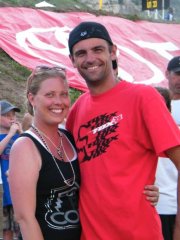Carburetor 101
-
Similar Forum Topics
-
By semicolon
Hi, I am having issues with my TRX350D fuel pump. It suddenly stopped running so I have replaced all the fuses and cleaned all the terminals. I have fitted a new pump, fuel cut-off relay and rectifier. Still nothing!! The pump runs when attached to a battery. The engine will start on the choke and the filter fills with fuel but it will not rev and dies when the choke is closed. I have power to the relay but nothing at the pump black/white wire when cranking the engine. Any ideas where to go from here would be very much appreciated!!
-
By DrtyGrlKristin
Just thought I'd start a new thread for newbies to the site!
If you're new here, tell us who you are, where you're from and what you ride!!!
Lets get to know each other a little better shall we?
I'm not new to the site, obviously, but...
I'm Kristin from Denver!!! I ride a 2008 Yamaha Rhino. She's my muddy baby!!!!!! Several aftermarket parts on her. She's good to me! We try and ride every weekend. This weekend we're off to MOAB! :woot:
-
By DarkRider
This is something I'm extremely curious about. Has anyone ever attempted to buy a quad (or any other vehicle) from an impound lot? I've always wondered if this could be a bargain, or a waste of time. Google searches do turn up some helpful results. Looks like the state of NJ holds auctions online which I'd be a bit hesitant about.
My online searches haven't really turned up any results of anyone buying an ATV this way. I'd be really curious if anyone tried this, or knows someone who has. I've actually found a couple pages with online auctions for my state, but none had ATVs.
-
By BuckBilly
Good morning to all !!!!!!!!!!!!!!!!!!!!!!!!!!!!!!!!!!!!!
Let's see if we can make this a daily event.

-
By kawasig
Hello there
I'm having a problem finding a quality carburetor for a 1993 Suzuki Quad Runner lt-f 250 2x4. I find a lot that have 3-4 star ratings. And all so far don't have the right throttle Cable inlet at the top. The last one I got 4 star on Amazon has a threaded cable sheath rest that could be partially drilled to work. I would prefer to get one I don't have to modify. Any recommendations are greatly appreciated!
-








Recommended Posts
Join the conversation
You can post now and register later. If you have an account, sign in now to post with your account.
Note: Your post will require moderator approval before it will be visible.